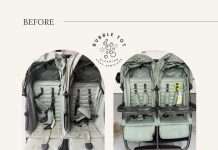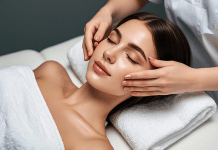
If you feel like your lower eyelids are making you look old and tired, you are not alone—most people have some issue with the appearance of their lower lids. These issues vary from person to person and can really start to age the face. Because each lower lid problem is unique, there must be a personalized approach to addressing lower lids, and this is usually best done through an in-person consultation with an eyelid surgeon. While nothing can take the place of an actual doctor’s visit, I’d like to share with you some of the tips and tricks for the lower lids right here in this article.
Dark Circles
If dark circles are your biggest concern (and this is the most common lower lid problem in younger patients), then check out my recommendations to prevent and conceal those circles.
Puffiness (3 Causes)
The cause of puffiness is not as easy to assess as you may think. Are they puffy? Is there a true lower lid bag? Or is that part of your lower lid is normal and the surrounding area is actually just hollow? These are questions that an in-person physical evaluation is usually necessary to answer.
How does your doctor tell? While you aren’t able to examine your lower lids while looking up, your surgeon can. Often, when you look up, the movement of the eyeball muscles will cause a true fat bag to protrude, indicating that someone is a good candidate for a lower lid blepharoplasty.
1. Lower Lid Bag
A true “lower lid bag” is simply lower eyelid fat that has prolapsed through the orbital septum, which is the thin, film-like structure that is intended to hold the contents of the orbit—including orbital fat—back in place. As we age, this structure gets weaker and thinner, and fat is more likely to prolapse through. This is an extremely common problem in women in their 50s and above. However, it can happen at a younger age when hereditary factors are at play.
Treatments
Lower Eye Lift
Lower lid blepharoplasty (lower eye lift) is a surgery in which the surgeon makes either an external incision just below the lower eyelid margin or chooses to flip the lower eyelid and make the incision on the inside moist surface of the lower eyelid called the conjunctiva to avoid scar formation. In either case, the septum is opened, the fat is identified and trimmed/cut/sculpted to the desired effect.
Fat Repositioning or Fat Transfer
Often times, surgeons will also talk about fat repositioning or fat transfer. This refers to an attempt to remove the fat from behind the septum and place it in another location, most often draped over the inferior orbital rim in order to fill out some of the lower lid hollow areas. To address hollow areas post-surgery, some surgeons choose to add a bit of filler to the lower lid tear trough area, to achieve the perfect result of sculpted fat bag and filled trough hollowing.
Maybe you don’t have true lower lid fat bags. What else can cause lower lid fullness?
2. Robus Lower Eyelid Muscle
A common finding in the lower lid is a “hypertrophied orbicularis” or a particularly robust lower eyelid muscle. If this is the case, it is essential to differentiate this from a true fat bag because lower lid blepharoplasty will not fix this! A fat bag will usually be inferior to or below a hypertrophied orbicularis, which is one common way of telling these two conditions apart. Unfortunately, there is no great fix to a hypertrophied orbicularis because excising some of that muscle often leads to scarring between overlying skin and underlying structures.
Treatment
Lower Lid Filler
In this case, a small amount of lower lid filler can improve the contour and make patients happy. Of note, filler in this area usually lasts about 1-2 years so this can be a really good investment.
Are there any other conditions that can affect the lower lids?
3. Eyelid Looseness
Another common problem in the lower eyelids is eyelid laxity or looseness. With aging, we lose the elasticity of our skin, and the lids don’t appear as tight anymore. This can also be secondary to constant tugging from contact lens placement, rubbing from irritation or allergies, or trauma.
Treatments
Lower Lid Tightening
There is a surgical correction for this—one can have a lower lid tightening procedure called a canthopexy. In this procedure, the eyelid is disinherited from the orbital bone and reattached at a tighter position. It is usually a quick 30-minute procedure. However, you should know that this procedure can cause a few months of swelling and inflammation at the surgical site. While this usually subsides and produces a nice cosmetic result, it is important to factor in a few months of healing for this procedure.
Resurfacing Laser
Another nice tool to combat lower lid wrinkles and skin looseness is treating the skin with a resurfacing laser. My laser of choice in this area is the Fraxel non ablative treatment. The way I like to do these treatments is to put protective eye shields into the eye (I recommend this be done by a board certified ophthalmologist to reduce the risk of corneal abrasion!) and treat all the way up to the lash line, ensuring full coverage laser action.
If you are unhappy with the look of your lids in any way, have a consultation with your eyelid plastic surgeon—chances are, there is a personalized and unique solution that can solve your problems!






















